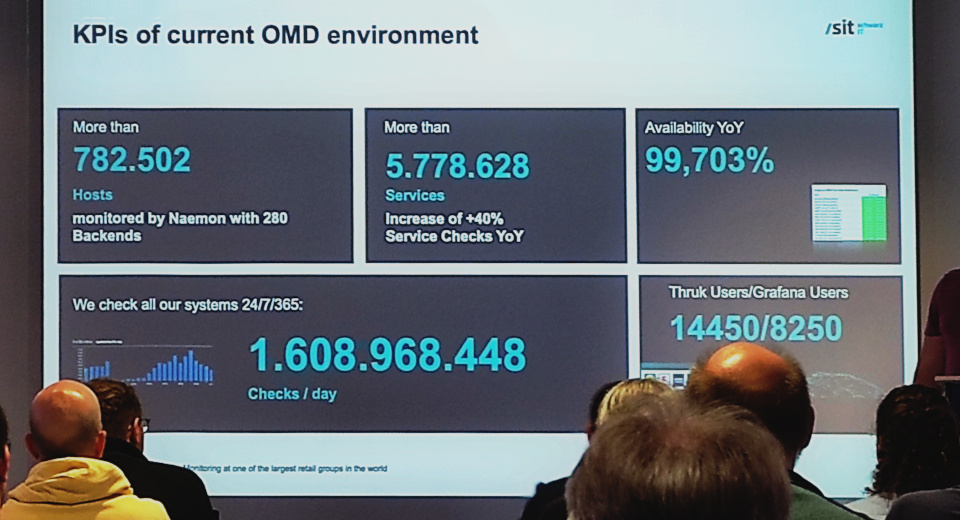OMD Labs
The OMD Labs-Edition is a monitoring platform and a new concept of how to install, maintain and update a nagios compatible monitoring system (When we are talking about nagios, we mean nagios-like. Our preferred core is Naemon). It contains most monitoring related components from omd.consol.de and others useful addons from companioned authors. It is not another linux distribution, instead it integrates well in your current system in form of a single rpm or deb package.
Have a look at the getting started page for first steps.
Labs OMD contains a huge list of packages, a best-of from the Nagios and Prometheus ecosystems.
The Idea
The main idea is to make the initial installation easy and less time consuming while providing a stable and standarized platform for further activities. A nagios system without addons and plugins is mostly useless, so OMD provides a way of making the initial setup fast and painless.
OMD-Labs goes a bit further and adds even more useful software. See the differences page for a full list
The real life

The Site Concept
OMD comes with a site concept solution with makes it possible to create and run multiple instances of OMD on one server. Sites can be renamed, copied and managed independently.
Roadmap
There is usually one stable release every 6 months. Every day there are nightly builds with the latest changes.
Since OMD itself is rather complete, upcoming releases mostly update the shipped components. There are no planned changes for OMD itself.
Download
Best practice is to use the prebuild packages from our repository as described in the installation section.
The nightly builds are available via our testing repository.
Installation
The installation is quite easy when using our Labs Repository. Just follow the steps for your operating system. After that use your package manager like apt, yum or zypper to search/install omd.
There are pre-built packages available for the following systems:
| System | Version | Package | ||
|---|---|---|---|---|
| RHEL/Centos | 7 | download | ||
| RHEL/Centos/Rocky | 8 | download | ||
| RHEL/Centos/Rocky | 9 | download | ||
| Debian | 11 | Bullseye | download | |
| Debian | 12 | Bookworm | download | |
| Debian | 13 | Trixie | download | |
| SLES | 15 SP4 | download | ||
| SLES | 15 SP5 | download | ||
| SLES | 15 SP6 | download | ||
| Ubuntu | 20.04 | Focal Fossal | download | |
| Ubuntu | 22.04 | Jammy Jellyfish | download | |
| Ubuntu | 24.04 | Noble Numbat | download |
Rocky/Centos/Redhat will require the Epel repository. Redhat will additionally require these extra channels:subscription-manager repos --enable=rhel-7-server-rpms \
--enable=rhel-7-server-extras-rpms \
--enable=rhel-7-server-optional-rpms
Filesystem Layout
OMD uses a normal linux filesystem layout for etc, lib, var… except everything is relative to the sites home folder. Read more in the filesystem layout documentation.
OMD Commands
OMD offers a few commands to create and operate your sites. See an overview in the omd command reference.
Grafana Graphing
Besides PNP4Nagios the OMD Labs edition offers Grafana based Graphs. Read more on that topic on the graphing page.
E-Mail Notifications
We ship a template based easy customizable email notification script with OMD. Read more about that in the omd notification reference.